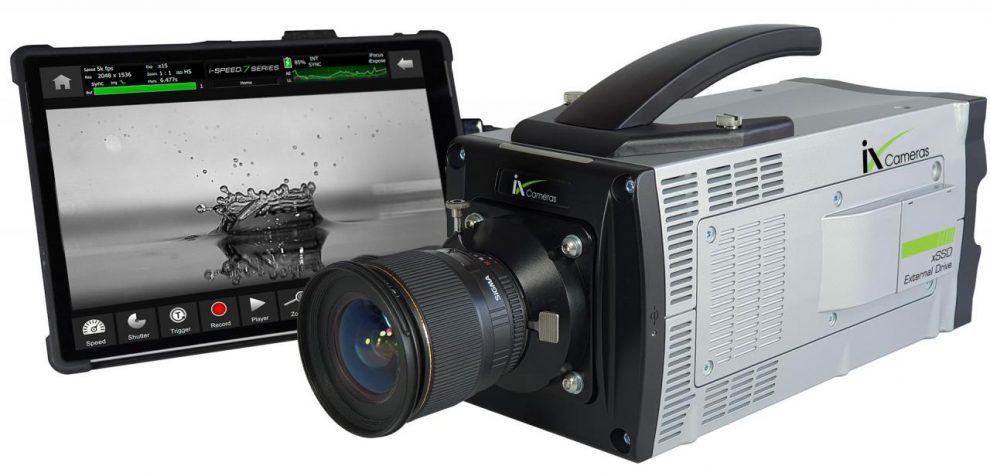High-speed cameras capable of recording thousands of frames per second are invaluable for capturing highly dynamic events in stunning slow motion. Rigorously testing critical camera characteristics like resolution, frame rates, sensitivity, and interfaces ensures optimal imaging performance and reliability when deploying high-speed systems in demanding live-action applications.
Confirming Image Quality
Slow motion begins with capturing pristine high resolution in-motion content. Testing evaluates image sharpness, color accuracy, distortion, and noise across operational conditions using calibrated targets.
Standard test charts examine resolution via patterns like ISO 12233. Color rendition and skin tones are quantified against ColorChecker references. And contrast sensitivity charts measure dynamic range. Thorough testing validates image excellence.
As Vision Research workflow specialist Maya Joseph noted, “We exhaustively characterize image quality metrics like sharpness and color for our high-speed camera models to guarantee top-tier video capture.”
Verifying Frame Rates
The hallmark of high-speed cameras is ultrafast frame rates ranging from 500 fps to over 100,000 fps for radical slow motion. Testing validates maximum and sustainable frame rates specifications using frame counters and timers.
Rates are checked across resolution settings – higher rates are achievable at lower resolutions. Conformance to expected rates based on settings confirms camera performance. And thermal testing validates stable framerates during warm-up cycles.
“We rigorously test advertise frame rates across operational modes to provide customers reliable specifications,” said Kron Technologies VP of Engineering Tucker Bowe.
Optimizing Dynamic Range
Slow motion scenes often combine ultrafast movement with subtle details – posing dynamic range challenges. Testing evaluates sensor low-light sensitivity, highlight headroom, and noise characteristics using calibrated light sources and charts.
Measuring bits/pixel and SNR across illumination levels quantifies useful dynamic range. Noise floors are checked at long exposures. And artifact-free highlight handling validates optimal sensor performance.
As Vision Research CTO Jitendra Gehlot commented, “Optimizing dynamic range provides the detail richness essential for illuminating both high-speed actions and nuances.”
Confirming Triggering Capabilities
Precise triggering synchronizes recording with fleeting events. Testing focuses on verifying trigger accuracy, minimum latencies, and jitter. External triggering modes are also validated.
Frames timestamps and external oscilloscope signals pinpoint trigger precision. Minimum pre-event buffering defines start timing. And trigger jitter checks consistency. Valid trigger testing ensures capturing elusive transient moments.
“Our high-speed camera testing rigorously verifies exacting trigger performance to enable capturing unpredictable instants,” said Camera Development Manager Yi Zhang.
Evaluating Interfaces
Download and control interfaces must keep pace with streamed high bandwidth video. Testing focuses on interface speeds and reliability transporting high resolution content.
Sustained maximum data rates are measured over USB 3, Gigabit Ethernet, HDMI, and custom camera interfaces using traffic generators. Error-free operation confirms robust interface implementations.
“We thoroughly test data interfaces under heavy loads to guarantee flawless high-speed video streaming,” said Vision Research Lead Test Engineer Annette Stone.
Assessing Ruggedness
Real-world conditions impose stresses like shock, vibration, and contamination. Ruggedness testing evaluates camera resilience and sustained performance under harsh conditions per military specifications.
Cameras undergo intense mechanical shocks, extended vibration, large temperature swings, and foreign matter exposure based on intended deployment environments. Before/after imaging verifies robustness.
As Olympus Stream Product Manager Mike Gibbons described, “Rigorous ruggedness testing enables reliable field deployment for high-speed imaging of extreme stunts and sports.”
Optimizing Heat Dissipation
The extreme processor demands of real-time ultrahigh framerate capture generate significant heat. Testing focuses on measuring and optimizing thermal dissipation under sustained maximum loading.
Thermal imaging and internal sensors map hot spots under stress. Cooling enhancements like heat pipes and airflow optimization are verified. And extended operation confirms stability within temperature specifications.
“We relentlessly test and improve thermal characteristics so customers can count on consistent high-speed performance,” remarked IO Industries Director of Engineering Patricia Chen.
Validating Network Operation
High-speed capabilities enable networked multi-camera installations. Testing examines networking functionality, synchronization, remote control, and video streaming under representative conditions.
Latency, reliability, bandwidth usage, and stream synchronization are benchmarked. Real-world networking environments using switches and distances evaluate robustness. And cybersecurity experts probe for vulnerabilities.
As AWE Chief Engineer Marcin Łukomski noted, “Comprehensive network testing ensures our high-speed cameras deliver their full potential in integrated networked deployments.”
In summary, rigorous validation of essential performance metrics like resolution, frame rates, interfaces, and ruggedness enables deploying high-speed cameras with full confidence to capture stunning slow motion imagery of mission-critical events. These best practices for wringing out cameras transform raw speed specs into reliable ultrahigh-framerate production solutions.

















